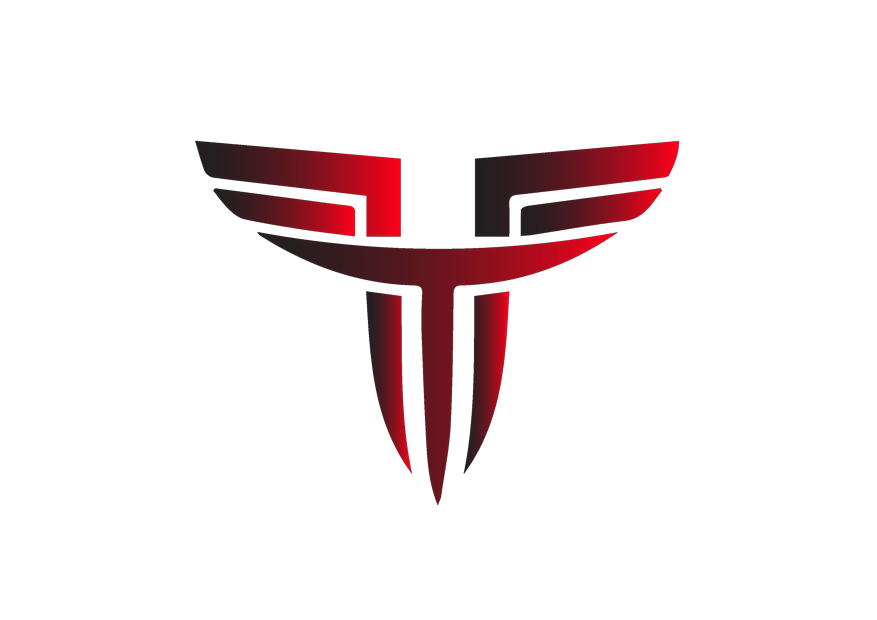If SEO made you findable, Generative Engine Optimization makes you quotable. And quotable brands are the ones AI keeps repeating, across chats, overviews, and assistive answers. That repetition compounds into revenue.

I work with founders and CMOs who live in dashboards. They feel the ground shifting. Traffic up, clicks down, leads weirdly steady. Meanwhile, buyers are asking Claude, Bing Copilot, Perplexity, and Google’s AI Overviews to decide. Not to browse, to decide. So the job changes. Instead of chasing only rankings, we earn mentions inside answers and citations inside summaries. That is Generative Engine Optimization, and it belongs in your growth stack.
Below is a practical, creative, yes human playbook for winning this new surface.
What is Generative Engine Optimization and why it matters
Generative Engine Optimization (GEO) is the craft of making your content easier for AI systems to understand, trust, and quote. Traditional SEO asks, how do we rank for a query. Generative Engine Optimization asks, how do we become the sentence inside the answer.
GEO versus SEO, in plain English
SEO optimizes for ranked lists. Generative Engine Optimization optimizes for synthesized replies. In SEO, we target head terms and snippets. In GEO, we design content that fits conversational asks, like, “What is the best CRM for a 10 person startup with strict SOC 2 needs.” The aim is to be named or cited when an assistant composes its response.
Where Answer Engine Optimization fits
You will also hear Answer Engine Optimization. Treat it as the sibling of Generative Engine Optimization. Same destination, slightly different road. Both focus on answer surfaces in tools like ChatGPT, Gemini, Perplexity, Bing Copilot, and Google’s AI experiences. The shared principle is simple, provide structured, trustworthy, complete answers that machines can parse and humans can use.
The search shift you cannot ignore
Two changes hit at once. First, AI answer boxes now sit on top of many results. Second, assistants route more questions away from classic search into chat. Consequently, blue link economics no longer tell the whole story.
AI Overviews change the results page
Google’s AI Overviews now appear widely for informational queries. When an overview fires, it often answers enough that the user clicks less. That means brands must earn visibility in two places at once, the overview itself and the top organic results under it. When you treat the overview as a new surface, Generative Engine Optimization becomes a necessity, not an experiment.
Assistants quote brands, not just pages
Chat assistants compress the web into a paragraph and a short list of sources. They do not return ten links, they return a judgment. Therefore, what the model believes about your entity matters. If your brand, product names, authors, and claims are cleanly defined across the web, assistants can confidently cite you. If not, you disappear even when you rank.
How Generative Engine Optimization actually works
Think like a librarian who needs to put your ideas on the right shelf, then think like a coach who makes the idea memorable.
Structure content so models can parse it
Machines love order. Use clear H2 and H3 headings, short paragraphs, and scannable bullets. Put the core answer in the first sentence of each section. Add a Frequently Asked Questions block that mirrors the way people speak to assistants. Include glossaries for domain terms. Finally, repeat key facts consistently across your site, so the model stops seeing contradictions.
Boost trust with sources, authors, and evidence
Assistants weight credibility. Give them reasons to believe you. Publish author bios with credentials, link to primary sources, and quote external experts. Where you present numbers, include method notes. Where you offer an opinion, state the premise. This is E‑E‑A‑T thinking applied to answers. It reads better for humans and it resolves ambiguity for machines.
Use schema, entities, and tidy data
Generative engines pay attention to structure. Mark up products, how‑tos, FAQs, organizations, and people with schema. Declare the canonical brand entity the same way everywhere, including the short description, logo, sameAs links, and social profiles. For key pages, add FAQPage and QAPage blocks, and keep every Q and A tight. When your graph is clean, assistants can stitch facts without guessing.
Add quotes, stats, and steps
Generative Engine Optimization loves concrete. Use two kinds of concrete. First, evidence like benchmarks, dates, and before after results. Second, process like numbered steps and checklists. Because assistants often summarize, these elements get picked up and echoed. Over time, your phrasing becomes the default phrasing.
Build authority where assistants actually look
Winning GEO is not just on site. It is around your site.
Generative Engine Optimization loves Reddit style proof
Many assistants cite community threads for practical questions. Treat forums as research and reference surfaces, not billboard space. Publish helpful replies from verified brand accounts. Summarize edge cases without spin. Link to a short, neutral resource on your site, such as a troubleshooting page or a calculator. Those links are small, the authority signal is big.
Strengthen your entity on neutral grounds
Wikipedia, industry wikis, reputable directories, and conference sites help assistants resolve who you are. Keep entries factual. Keep sources third party. Update company boilerplates so names and product lines match your site exactly. Consistency reduces hallucinations.
Feed the ecosystem with quotable originals
Original research, teardown posts, comparison matrices, and public datasets become citations that others reference. Publish one small study per quarter with simple methods and downloadable CSV. Then pitch two industry newsletters. The long tail of quotes powers your Generative Engine Optimization for years.
Optimize for natural language, not only keywords
Assistants speak in full sentences. Your content should too.
Phrase headings like the questions buyers ask
Write H2 and H3 the way a person would ask an assistant. For example, “What is the total cost of a SOC 2 audit for a startup.” Under the hood you still map to keywords, but the surface reads like a conversation. Therefore, you win both the answer box and the human.
Cover intent and the likely follow up
If someone asks, “best mid‑market data warehouse for real time analytics,” the next questions are cost, integration effort, lock in, and migration risk. Anticipate the follow up inside the same page. Add short decision tables so a model can copy them cleanly.
Use voice of customer excerpts
Pull phrases from call notes, reviews, and sales emails. Mark them as quotes. Models like the natural phrasing and future buyers feel seen. Everybody wins.
Measurement that respects reality
If you only watch sessions, you will miss the story. Generative Engine Optimization needs new signals.
Track citations, mentions, and assistant referrals
Add a weekly review that checks assistant answers for priority queries. Record whether your brand appears, whether a specific page is cited, and what phrase the model uses to describe your benefit. Monitor referral labels from AI tools in your analytics. Some will show as direct traffic, so annotate launches and look for uplifts in branded queries and demo starts.
Triangulate with log files and crawling data
Compare AI bot crawling to assistant referrals. If crawl rises but mentions do not, your content is being read but not used. That signals a trust or clarity gap. Consequently, strengthen citations, author identity, or step by step sections.
Define success like a portfolio
Do not chase a single metric. Blend three buckets. 1, Visibility in answers and overviews. 2, Engagement on evergreen assets that assistants frequently cite. 3, Business outcomes on assisted conversions where the first touch was an AI answer query. Review monthly, not daily. GEO is compounding, not casino.
A quick Generative Engine Optimization sprint
Speed matters, but so does sequence. Here is a practical plan you can run with a lean team.
Inventory and baselines
First, list your top 20 money pages. Next, capture the 5 to 8 questions each page should answer, exactly as a buyer would ask them. Then, check assistants for those questions and screenshot the outputs. Finally, score your presence, named, cited, absent.
- Build an entity sheet for company, products, authors, and social profiles.
- Gather your strongest third party sources for each claim.
- Decide on one focus keyphrase for this sprint, Generative Engine Optimization.
Rebuild two pages and one FAQ hub
Pick two pages with revenue impact and a realistic win path. For each page, do the following.
- Rewrite the H2 and H3 to mirror conversational asks.
- Add a 10 to 20 question FAQ block, answers under 80 words each.
- Insert one original table, one checklist, and one short quote.
- Add schema for FAQPage, HowTo or Product, plus Organization or Person where relevant.
- Publish a FAQ hub that answers category level questions and interlinks to deeper pages, for example, link to individual service pages
Distribution and entity strengthening
Now, take the quotable bits outside your site.
- Post one neutral, helpful answer on a relevant community thread and link back to your tiny resource.
- Update your author pages on conference sites and directories so bios match your on site version exactly.
- Pitch one newsletter editor with a two paragraph summary of your new table or dataset.
Evaluate and scale
Return to your screenshots. Re run the same questions. Did your brand get named in the answers, a specific page get cited or did branded search lift and referrals from assistants tick up. Keep what worked. Fix what wobbled. Then choose the next two pages.
Governance, ethics, and practical guardrails
Play offense, while protecting your brand and partners.
- Respect robots.txt and terms on community platforms. Do not flood forums with promos. Be useful.
- Keep disclosures crisp. When you publish research, publish the method.
- Track assistant errors about your brand. Where answers go wrong, publish a clarification page and offer a short correction note on the platforms that allow feedback.
- Consider licensing when you rely on third party content. Sustainable ecosystems help everyone, including you.
FAQs about Generative Engine Optimization
It is the practice of designing content and entities so AI assistants can understand, trust, and quote your brand inside their answers.
No. SEO keeps you discoverable. Generative Engine Optimization makes you quotable. You need both.
The terms overlap. Both target answer surfaces in assistants and overviews. Use either label, the tactics are similar.
Clear H2s, conversational H3s, one table, one checklist, one short quote, a compact FAQ, and clean schema. Plus obvious links to your next step pages.
Sometimes, and sometimes not. The bigger value is decision acceleration. Buyers who already know your name close faster, because the assistant repeated your benefits for them.
The close
Generative Engine Optimization is not magic. It is craft. Define your entities, tell the truth clearly, package answers so a model can lift them, and seed the ecosystem with quotable proof. Do this consistently, and assistants will start saying your name back to you. That sound is demand forming.





